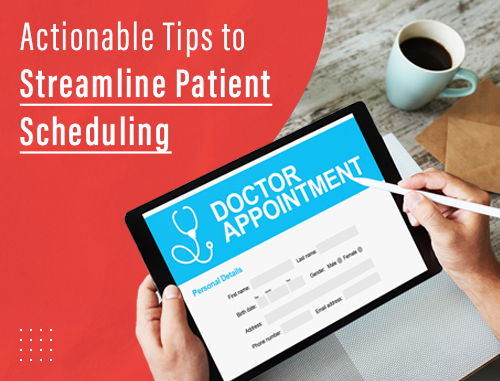The Patient Journey: A Roadmap to Wellness
Posted on
In an era when patients are empowered to be as active in the healthcare field as possible, their collective voice resonates louder than ever. They actively engage in their healthcare, asking questions and asserting their right to access medical records. While their confidence grows, let’s not overlook the courage it takes to make that initial call—an outreach driven by a bodily concern.
Throughout their healthcare journey, patients often feel outside their comfort zone. It’s crucial to mindfully navigate this, carefully shaping responses to their queries. Healthcare’s increasing priority is evident, with over 60% of patients deeming wait times dreadful. They scrutinize their experiences with healthcare providers, realizing the impact on their well-being.
Research underscores the financial aspect; practices with “excellent” HCAHPS patient ratings boast a 4.7% net margin compared to 1.8% for “low” ratings. This underscores the importance of mapping the patient’s journey. As this practice gains momentum, consider it an opportunity to inspire, motivate, and create a transformative experience. Each interaction is a chance to instill confidence, provide comfort, and contribute positively to their path to optimal health.
What is a “patient journey”?
The term ‘patient journey’ describes the overall experience individuals encounter when interacting with a medical practice, whether as newcomers or established patients. It spans from their initial awareness through various touchpoints, such as word-of-mouth referrals or online searches, to the culmination of their engagement, such as leaving an online review.

Analyzing the patient journey is pivotal for a comprehensive diagnostic approach, as it reveals potential obstacles and roadblocks. To deliver an unparalleled patient experience, medical practices must grasp patient needs and preferences at each stage. Building trust is paramount, emphasizing the medical staff’s dedication to preserving patient well-being. Effective communication becomes a linchpin in elevating the patient experience, ensuring a seamless journey that fosters confidence, satisfaction, and overall health.
Which stages make up the Patient Journey?
Stage 1: Discovery
The patient’s journey begins with awareness. By self-assessing conditions and symptoms, patients initiate their healthcare quest through online searches, review sites, marketing efforts, networking, or community events. As they encounter your touchpoints—your website, call center, and ads—the journey officially starts. Ensure a robust online presence with SEO-friendly content and an optimized Google Business Profile, as 94% of patients rely on online reviews.
Stage 2: Exploration
In the consideration phase, patients weigh options based on referrals, location, insurance, accessibility, and reviews. Challenges arise if reaching the provider proves difficult. Craft patient personas for preferred communication methods, using strategies like email marketing, targeted ads, and AI chatbots to ease the decision-making process and distinguish your brand.
Stage 3: Engagement
The acquisition stage marks the patient’s decision to schedule an appointment. Direct interactions occur through phone calls, patient portals, social media, emails, and SMS. Challenges include difficulty finding appointment links, lengthy wait times, and extensive paperwork. Implement digital solutions like patient scheduling software to streamline bookings and enhance patient satisfaction.

Stage 4: Care Experience
Experienced care delivery is the focal point where traditional patient satisfaction is gauged. The emphasis shifts from online presence to quality of care. Administering treatment and meeting expectations become crucial. Utilize tools like billing or patient management software, CRM platforms, and review solicitation software to ensure top-notch care, effective data management, and feedback collection.
Stage 5: Continuous Care and Loyalty
In the ongoing care phase, retaining patients becomes pivotal. Prioritize improved communication, engage between visits, streamline appointments with digital solutions, manage your online reputation proactively, and exhibit excellent bedside manners. Personalize aftercare, track interactions, and build strong physician-patient relationships. Optimize patient experiences for better outcomes and heightened satisfaction.
Journey Mapping for Practice Growth: Why Is It Crucial?
Navigating the intricate realm of healthcare, patient journey mapping emerges as a cornerstone for medical practitioners. In the ever-evolving landscape, understanding the nuances of the patient journey becomes pivotal for sustainable practice growth. By delving into the patient journey from the outset, starting with the pivotal moment when individuals identify their health concerns, practitioners can strategically align their approach. Patient journey mapping serves as a powerful tool, offering insights that contribute to informed decision-making and ensuring each step of the patient’s path is crafted to be as pleasant as possible.
Key Importance of Patient Journey Mapping:
- Informed Decision-Making: Patient journey mapping provides a comprehensive understanding of the decision-making process, empowering patients with relevant and accurate information.
- Barriers Identification and Removal: Analysis of the patient journey allows practitioners to pinpoint and address obstacles, contributing to a smoother healthcare experience.
- Enhanced Patient Experience: Crafted interventions at each stage provide a positive patient experience, aligning interactions with individual needs and expectations.
- Practice Growth through Patient-Centric Care: Prioritizing patient journey mapping demonstrates a commitment to patient-centric care, cultivating satisfaction, loyalty, and organic practice growth.
Today, patient journey mapping isn’t just a tool; it’s a strategic approach that positions healthcare providers to adapt, evolve, and excel in delivering patient-focused care. Embracing patient journey mapping is not just about understanding; it’s about action, ensuring that every patient’s journey is a testament to the commitment to excellence in healthcare delivery.

Questions can help you build your patient’s journey map:
Question: How much does your patient know about his or her health situation?
Tip: This question will help you decide your potential patients’ level of knowledge about their health situation. Is your patient well-researched?
Question: What should your prospective patients know about their situation?
Tip: You can make your patients learn about their health issues by providing resources or educational material. Your patients must get a basic understanding of their illness, symptoms, and ways to address them. This process will also be helpful in establishing you as a trusted source.
Question: How severe is the illness? Is the patient feeling comfortable or in distress?
Tip: Your patient may expect immediate answers or resolution if he or she is in distress. This conversation will allow you to understand the stages of illness, symptoms, emotional needs, if any, and points of pain.
Question: Is your patient scared, or in pain?
Tip: Your patient could be feeling vulnerable, overwhelmed, uncertain, urgent, or hopeful.Your patient may want to know specifically how his or her health concern will be addressed.

Question: What is your patient expecting from the treatment plan?
Tip: Most patients will expect an explanation or an understanding of their health issue. The most common expectation is relief or control of persisting symptoms or discomfort, and the most common disappointing outcome is being told not much can be done. Many patients expect further medical investigations and changes to the existing medication.
This conversation may make your patient feel hopeful and confident. You can help him or her get back to a normal life by reducing pain and worry.
These five questions can play a significant role in bringing your potential patient to life. By asking these questions, you can gauge your patient’s heart and mind. These questions may also help you make thoughtful decisions about the channels, touchpoints, and milestones that are most relevant to your patient’s current state and future outcome.
Patient Journey Analysis: A Maximizing Approach
Patient journey mapping is a pivotal strategic process for capturing and communicating patient interactions. This practice, when executed effectively, establishes a foundation for seamless patient experiences, fosters empowerment for both patients and physicians, and yields valuable insights for informed decisions.
Key Tips for Patient Interactions:
Create Patient Personas:
- Understand patients as individuals with unique lives.
- Develop personas based on factors like gender, age, ethnicity, and lifestyle.
- Visualize the patient’s journey within the broader context of their daily lives.
Respect Without Judgment:
- Confirm assumptions and avoid unwarranted judgments.
- Recognize diverse internet usage across age groups.
- Tailor engagement strategies to different demographic preferences.
Acknowledge Caregiver Importance:
- Recognize the crucial role of unpaid caregivers.
- Address the unique stressors and concerns of caregivers.
- Tailor healthcare marketing efforts to support caregivers on their journey.
Simplify Communication:
- Avoid technical jargon in patient communication.
- Address health literacy concerns by simplifying information.
- Focus on a broad audience, considering varied levels of medical understanding.
Navigating the dynamic field of healthcare marketing, these concise yet powerful strategies underscore the importance of both patient journey mapping and the customer’s healthcare journey. They ensure personalized, respectful, and accessible interactions at every stage. By giving precedence to patient personas, embracing diverse internet usage, recognizing the pivotal role of caregivers, and simplifying communication, a collective effort is made to improve the overall patient experience and fortify the foundation of a robust healthcare practice.

 Combining SEO and Social Media for Healthcare Prac..
Combining SEO and Social Media for Healthcare Prac.. The Best SEO Tools for Boosting Your Website Traff..
The Best SEO Tools for Boosting Your Website Traff.. Actionable Tips to Streamline Patient Scheduling
Actionable Tips to Streamline Patient Scheduling